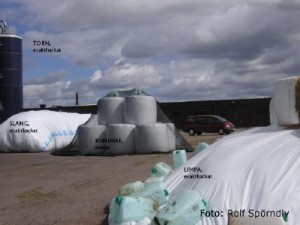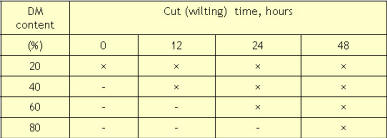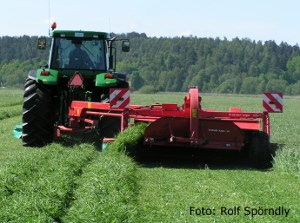Project responsible: Rolf Spörndly, Department of Animal Nutrition and Management, SLU
Project group: Torsten Eriksson and Martin Knícky, Department of Animal Nutrition and Management, SLU
Forage ley is the crop occupying the greatest area in Sweden, 49% of agricultural land (16% grazing and 33% harvested ley). It is the largest feed ingredient in the diet of dairy and beef cattle, sheep, goats and horses.
During silage making the crop is first cut and then allowed to dry (wilt) from approx. 20% DM to 30-60% DM. The crop is then transported to air-tight silos of various designs. In Sweden, silage is made in tower silos, plane silos, round bales or tubes.

Wilting can take anything from a few hours to several days depending on the weather and the methods used for harvesting. Different methods for handling the newly cut silage can speed up the process. The actual mechanical treatment can also be expected to have an effect on the degree of decomposition that occurs in the cut crop and during the ensiling process.
The study aims to determine in a systematic way how the protein and fatty acid fractions are altered during wilting and to characterise various quality parameters. This is essential for future technical development of harvesting systems that maintain quality during forage conservation.
In the first year, the effects of wilting and DM content will be studied in a red clover-timothy ley according to the timetable below.

In the second year the study will continue with fewer variables but with additional plant material in the form of:
- white clover
- birdsfoot trefoil
- sainfoin
- meadow fescue
- ryegrass


